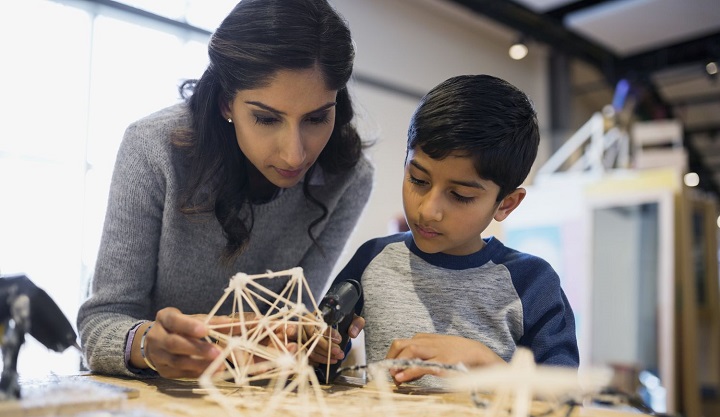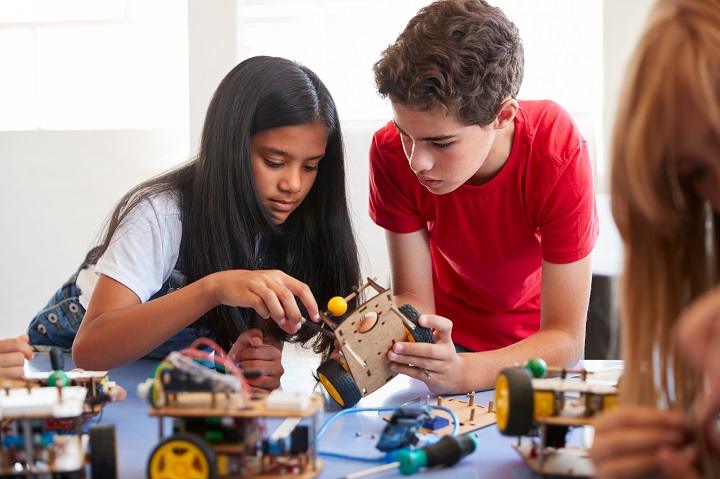
Science is all around us – in our homes, in nature, and in our bodies.
Likewise, there are many reasons to build and hone your child’s ‘science literacy’. More than just a subject in school, science has many positive impacts on a child’s development. A content analysis published in 2020 concluded that STEM learning can better equip students with the skills needed to cope with the challenges that industry 4.0 brings, while encouraging more innovation.
Findings from 3M’s 2021 global science perception survey, the 3M State of Science Index found that COVID-19 has also put STEM in focus. Nearly all of Asia-Pacific respondents, or 91%, agree that the world needs more people pursuing STEM related careers.
Luckily, 73% agree that young people are more engaged in science and science-related issues than ever before. In fact, two-thirds of the Asia-Pacific respondents are more inspired to pursue a STEM career (66% vs. 60% globally). In addition, a 2020 YouthInsight report that surveyed 1,500 Filipino students aged between 12 and 25 years across all regions, found that 80% of the respondents recognize the positive impact of Science and Technology on the world.
It all starts with a spark. Encouraging your child to take an interest in science doesn’t have to be complicated. Here are five easy and fun ways you can do so!
1. Explore your child’s questions and seek answers together. There is no better time for learning than when the questions come. And when they do, take the time to explain concepts. If you are unsure of the answers, turn this into another learning opportunity. Search for answers together with your child. Head to the library or read articles online.
In this age of the internet, where information is freely available, it is also important to be discerning. Always refer to credible sources and make use of online fact-checkers such as Google’s Fact Check Tools and FactCheck.org to ensure that you’re not reading fake news.
In turn, parents can also ask questions to encourage their children’s learning and exploration. Instead of shying away when your child asks questions, take this opportunity to explore science together and teach them the important lessons of research and discovery!
2. Play science games. Engaging in play has more benefits than you might think. A report published by the American Academy of Pediatrics showed that play fosters the social-emotional, cognitive, language, and self-regulation skills that support the important functions and the development of a child’s brain.
Teach your child how friction works by playing a game of tug-of-war, or let them build their own light-up board game using paper circuits. If you prefer online science games, Code – a non-profit dedicated to expanding access to computer science – introduces computer science to your child in a fun and digestible way, such as having lessons centered around Angry Birds and Minecraft.
3. DIY toys. While technology is a great tool for learning science, it is also important to take a break from the screen. Encourage your children to make their own toys using what they have around them.
According to a Gallup poll of over 1,036 teachers, 2,673 parents and 853 students, promoting creativity in education is key. Encouraging creativity during learning enhances students’ problem solving and critical thinking skills. Besides being able to retain more content, students could also make better connections between different subjects, had a deeper understanding of subjects, and overall better test performances.

4. Visit science museums and exhibitions virtually. Staying home does not mean you have to be bored at home. Many museums and science organizations are offering alternative exhibits, tours, or workshops online that you and your child can join from the safety and comfort of home.
Check out virtual exhibits organized by The Mind Museum, a science-themed museum. Explore rainforests, discover the solar system, and even meet dinosaurs – all through the internet!
5. Engage in hands-on activities. Take advantage of your children’s never-ending curiosity and encourage them to get their hands dirty.
Need more resources? Try out various simple, at-home experiments on 3M’s Science At Home website. Discover how you can use common household items to reinforce core scientific principles that are both fun and educational – Try building a paper rocket, or learn how you can create amazing fireworks effects!
Encouraging your child to learn and love science can be simple, fun, and an extremely rewarding journey. With these five handy tips, we hope that you will be inspired to help hone that little scientist within them.

